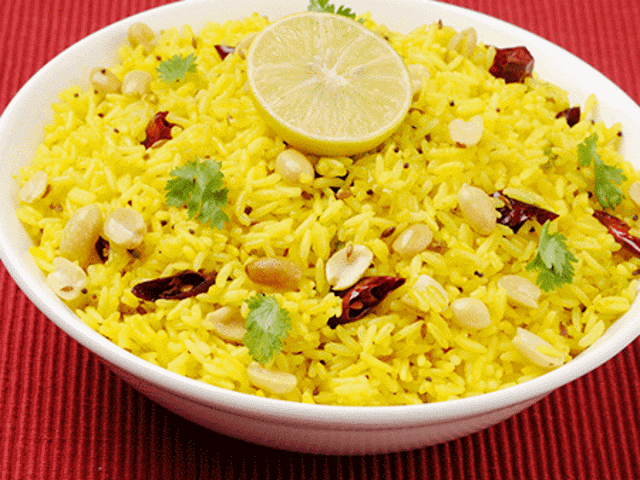The Traditional Lemon Rice Recipe
Before we delve into the healthier alternatives, let’s take a quick look at the traditional method of preparing lemon rice.
Ingredients:
1 cup of rice (preferably Basmati or Sona Masuri)
1 lemon (juice extracted)
2 tablespoons of oil (usually vegetable or peanut oil)
1 teaspoon mustard seeds
1 teaspoon cumin seeds
1 tablespoon chana dal (optional)
1 tablespoon urad dal (optional)
A handful of roasted peanuts
1-2 green chilies, chopped
A pinch of turmeric powder
Curry leaves (5-6 leaves)
Salt to taste
Fresh coriander leaves for garnish
Instructions:
Cook the rice and let it cool.
Heat oil in a pan, add mustard seeds, cumin seeds, chana dal, and urad dal.
Once the seeds start spluttering, add chopped green chilies, curry leaves, and peanuts. Sauté for a few minutes.
Add turmeric powder, salt, and lemon juice.
Mix the cooked rice into the pan and gently toss until the rice is coated with the seasoning.
Garnish with coriander leaves and serve.
The traditional lemon rice recipe, while delicious, can be high in fat if a lot of oil is used, and the white rice provides quick-release carbohydrates, which may not be suitable for those aiming for lower-glycemic meals. Let’s explore some healthier alternatives to make this dish more nutritious.
Healthy Lemon Rice Variations
1. Replace White Rice with Brown Rice or Quinoa
The first step to making your lemon rice healthier is by swapping out white rice with more nutritious grains like brown rice or quinoa. These options are higher in fiber, which promotes better digestion and helps in controlling blood sugar levels. Brown rice has more nutrients, including B vitamins, magnesium, and iron, compared to its refined counterpart.
Quinoa, on the other hand, is a complete protein, containing all nine essential amino acids, making it a perfect option for those looking to increase their protein intake. Plus, it’s gluten-free and packed with antioxidants.
How to prepare lemon rice with brown rice or quinoa:
Follow the same recipe as above but replace white rice with 1 cup of cooked brown rice or quinoa.
Brown rice will take longer to cook than white rice, so plan accordingly.
Quinoa cooks faster and absorbs the lemon flavor beautifully.
This small change increases the fiber and nutrient content of your dish, making it healthier and more filling.
2. Use Minimal Oil or Switch to Healthier Oils
Traditionally, lemon rice is made using vegetable oil or peanut oil. However, you can make a simple yet effective change by reducing the amount of oil or choosing healthier alternatives like extra virgin olive oil or coconut oil. Both of these oils contain healthy fats that can provide better cardiovascular health benefits.
Extra virgin olive oil is rich in monounsaturated fats and antioxidants, making it a heart-healthy option. Coconut oil contains medium-chain triglycerides (MCTs), which are thought to increase energy and boost metabolism.
If you prefer to stay true to the Indian palate, you can opt for cold-pressed sesame oil, which also has numerous health benefits and adds a unique flavor to the rice.
When cooking, limit the oil to just 1 tablespoon instead of the usual 2-3 tablespoons used in traditional recipes. This helps in reducing the overall calorie content of the dish.
3. Load Up on Vegetables
Vegetables are key to enhancing the health quotient of any dish, and lemon rice is no exception. Add vegetables such as carrots, peas, green beans, or bell peppers to your lemon rice to make it more nutrient-dense. These vegetables not only increase the fiber content but also add vitamins, minerals, and antioxidants to the dish.
Here’s how you can add vegetables to your lemon rice:
Finely chop vegetables like carrots, green beans, and bell peppers.
Add them to the pan after sautéing the mustard seeds and other ingredients.
Cook for about 5-7 minutes or until the vegetables become tender.
Proceed with adding the rice and lemon juice as usual.
By incorporating vegetables, you turn a simple rice dish into a well-rounded meal rich in fiber, vitamins, and minerals.
4. Add Lentils for Protein
If you want to boost the protein content of your lemon rice, consider adding lentils such as moong dal (split mung beans) or masoor dal (split red lentils). These legumes are rich in protein and fiber and are also easy to digest.
Here’s a quick way to add lentils:
Wash and cook 1/4 cup of moong dal or masoor dal separately.
Add the cooked lentils to the rice after mixing in the lemon juice and stir gently.
This simple addition will not only add texture but also increase the protein content, making the dish more satisfying and nutritionally balanced.
5. Use Fresh Herbs and Spices for Flavor
In traditional lemon rice, green chilies, mustard seeds, and turmeric are used for flavor. You can enhance the flavor further by adding more fresh herbs like coriander and mint. These herbs bring freshness to the dish without adding calories.
You can also experiment with spices like:
Ginger: Grate a small amount of fresh ginger and add it to the tempering for added zing and digestive benefits.
Hing (Asafoetida): A pinch of this spice can enhance the flavor while also aiding in digestion.
Curry powder: For a spicier version, sprinkle a little curry powder into the tempering.
Spices and herbs not only add flavor but also come with their own set of health benefits, including anti-inflammatory and digestive properties.
6. Control the Salt
Salt is essential for flavor, but excess sodium can lead to water retention and increased blood pressure. Cut down on the salt or consider using Himalayan pink salt or sea salt in moderation. Both alternatives contain more trace minerals than regular table salt, making them a healthier option.
You can also try using lemon zest to naturally enhance the tangy flavor, which can help reduce the amount of salt needed.
Final Thoughts
Lemon rice is a versatile dish that can easily be transformed into a healthier meal by making a few smart choices. By replacing white rice with whole grains, minimizing oil, adding vegetables and lentils, and experimenting with herbs and spices, you can create a nutritious and delicious version of this beloved dish.
These simple changes not only boost the nutritional profile of the dish but also add layers of flavor and texture, making it even more enjoyable. So, the next time you crave lemon rice, give these healthy tweaks a try, and you’ll have a guilt-free, wholesome meal in no time.








Social Plugin